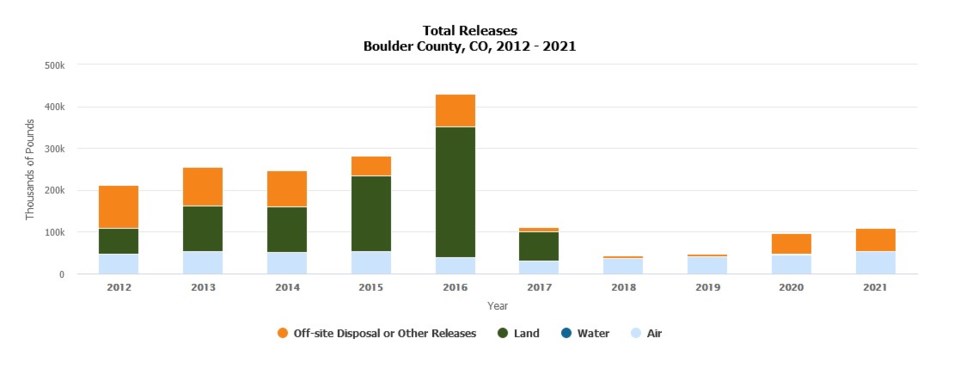The U.S. Environmental Protection Agency released its 2021 Toxic Release Inventory National Analysis last week. The analysis found that environmental releases of toxic chemicals that may pose a threat to human health and the environment from across the nation remained below pre-pandemic levels.
Releases nationwide in 2021 are 10% lower than 2012 releases, the EPA said in a release, even after increasing 8% from 2020 to 2021. Additionally, in 2021 facilities managed more than 89% of TRI chemical waste through preferred practices like recycling, energy recovery and treatment, with 11% of TRI chemical waste released into the environment.
“The Toxics Release Inventory is a valuable tool that provides detailed information about how chemicals are used and managed in our communities,” EPA Regional Administrator KC Becker said in the release. “These data provide a high-resolution picture of how toxic chemicals are used, managed and disposed of at hundreds of facilities across our region and can help inform significant pollution prevention activities, especially in our most overburdened and vulnerable communities.”
According to the TRI Explorer provided by the EPA, Boulder County has 16 TRI facilities, which produced 18.4 million pounds of production-related waste in 2021 and disposed of 109,300 pounds of certain toxic chemicals.
The amount of production-related waste managed in Boulder County went up by about 10 million pounds in Boulder County from 2020-2021, a significant increase. However, most of that waste was not released into the environment.
Of the 18.4 million pounds of waste managed in the county in 2021, 26% of it was recycled, the EPA’s preferred method of disposal. The next preferred method of disposal is energy recovery, which is how 66% of waste was managed in 2021 followed by 8% treated, the third preferred method, and 1% disposed of, the last resort.
Of that, 55,600 pounds of toxic chemicals were disposed of off site, while 53,800 were disposed of on-site. The majority of on-site disposal was released into the air, with just 665 pounds into the land. None of the managed toxic chemical waste in Boulder County was disposed onsite via water.
Boulder County releases increased slightly from 2020 to 2021 by a little over 10,000 more pounds, but remained significantly below toxic releases in 2016, which peaked at 429,424 pounds.
What was released in Boulder County was roughly evenly emitted to either air or disposed of off-site, with just 1% being placed into some type of land disposal.
The largest facility for toxic chemical release in Boulder County was Micro Motion, with 51,589 pounds of off-site disposal. This was followed by Corden Pharma, which released 37,825 pounds into the air along with another 765 of off-site disposal.
The 53,100 pounds of chemicals released into Boulder County’s air in 2021 were 28% methanol, 20% acetonitrile, 15% of certain glycol ethers, 12% methyl tert-butyl ether, 7% ammonia and 19% other.
In EPA Region 8, which includes Colorado, Montana, North Dakota, South Dakota, Utah, Wyoming and 28 Tribal Nations, the EPA noted there has been a long-term decline in production related waste. From 2012-2021, releases increased by 8.8% while production related waste decreased by 12.7%.
Colorado is 8th among U.S. states and territories for lowest releases per square mile, with metal mining facilities having some of the largest releases in the state.
The public can access the Toxic Release Inventory to view local data and analysis.



